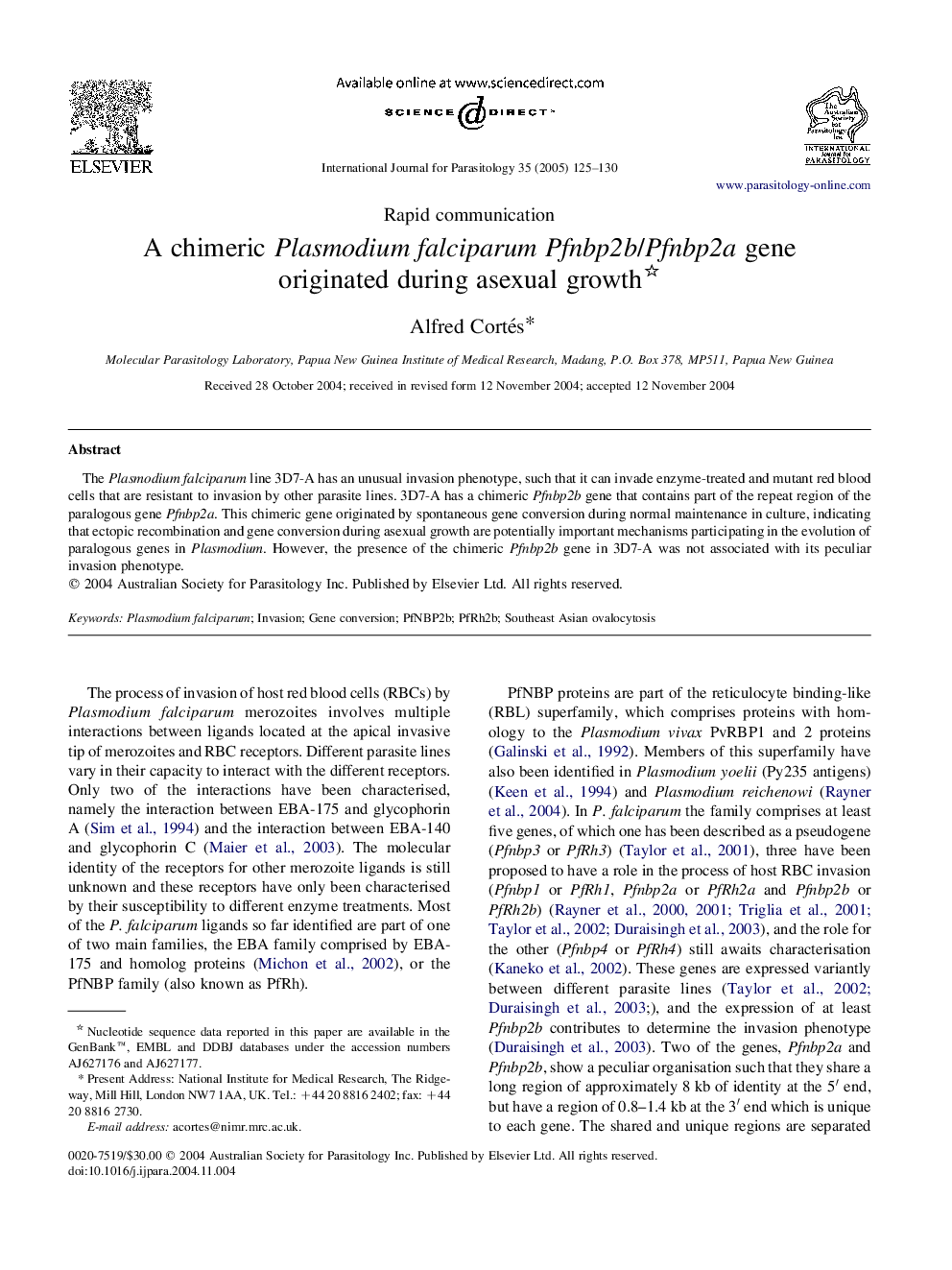| Article ID | Journal | Published Year | Pages | File Type |
|---|---|---|---|---|
| 8980036 | International Journal for Parasitology | 2005 | 6 Pages |
Abstract
The Plasmodium falciparum line 3D7-A has an unusual invasion phenotype, such that it can invade enzyme-treated and mutant red blood cells that are resistant to invasion by other parasite lines. 3D7-A has a chimeric Pfnbp2b gene that contains part of the repeat region of the paralogous gene Pfnbp2a. This chimeric gene originated by spontaneous gene conversion during normal maintenance in culture, indicating that ectopic recombination and gene conversion during asexual growth are potentially important mechanisms participating in the evolution of paralogous genes in Plasmodium. However, the presence of the chimeric Pfnbp2b gene in 3D7-A was not associated with its peculiar invasion phenotype.
Related Topics
Life Sciences
Immunology and Microbiology
Parasitology
Authors
Alfred Cortés,
